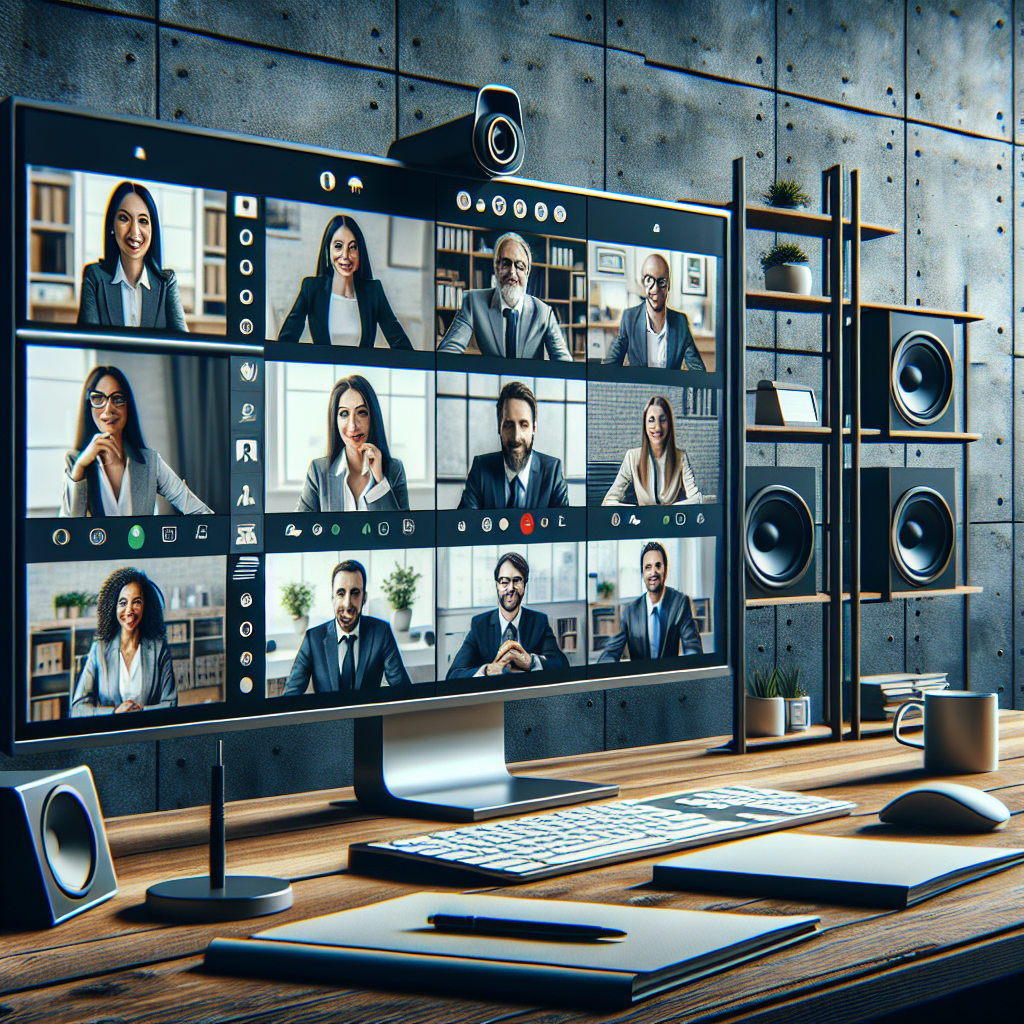In the modern era where remote work and virtual meetings have become the norm, understanding the ideal resolution for video conferencing is essential for ensuring clear communication and productive meetings. Choosing the right resolution can enhance the overall experience, making it easier for participants to engage and collaborate effectively.
Understanding Video Resolution
Video resolution refers to the number of pixels displayed on the screen, typically represented by width x height (e.g., 1920 x 1080 pixels). Higher resolutions offer more detail and clarity, while lower resolutions can result in a blurry or pixelated image. Common video resolutions include:
| Resolution | Pixels | Common Uses |
|---|---|---|
| SD (Standard Definition) | 640 x 480 | Basic video calls |
| HD (High Definition) | 1280 x 720 | Webinars, business meetings |
| Full HD (Full High Definition) | 1920 x 1080 | Professional video conferences |
| 4K (Ultra High Definition) | 3840 x 2160 | High-end professional meetings |
Factors to Consider When Choosing Video Resolution
Several factors influence the ideal video resolution for conferencing. Considering these will help you make an informed decision:
Bandwidth and Internet Speed
The higher the resolution, the more bandwidth and internet speed you’ll need. Ensure your internet connection can handle the desired resolution to avoid lag and buffering issues.
Device Capabilities
Check if your camera and display support the intended resolution. Using a high-resolution setting on a device that can’t properly display it will not yield the best results.
Meeting Purpose
The purpose of the meeting can dictate the needed resolution. Casual catch-ups might do well with HD, while important business meetings may require Full HD or even 4K for optimal professionalism.
Participant Equipment
Consider the equipment of other participants. If most attendees have limited bandwidth or lower-end devices, a high-resolution setting might not be practical.
Recommended Resolutions for Different Scenarios
Casual Meetings and Daily Stand-ups
For informal meetings or daily team updates, a 720p resolution (HD) is typically sufficient. It offers a good balance between quality and bandwidth usage, ensuring a smooth experience for all participants.
Business Conferences and Webinars
Professional meetings and webinars generally benefit from a Full HD resolution (1080p). This resolution ensures clear visuals, which can be essential when sharing detailed presentations or engaging with large groups.
High-Stakes Professional Meetings
For high-stakes negotiations or important client meetings, opting for 4K resolution can provide the best possible clarity. However, ensure that all participants have the necessary equipment and internet capabilities to support this high level of detail.
Common Challenges and Solutions
Bandwidth Limitations
One common challenge is limited bandwidth. Encourage participants to check their internet speed before the meeting. If bandwidth is an issue, consider lowering the resolution to ensure a smoother experience.
Device Compatibility
Encounters with incompatible devices can disrupt meetings. Ensure that all participants test their devices beforehand to confirm they can support the chosen resolution.
Environmental Factors
Lighting and background can impact video quality. Regardless of the resolution, ensure participants are in well-lit areas with minimal background distractions to maintain a professional appearance.
Additional Tips for Optimal Video Quality
- Use High-Quality Equipment: Invest in a good webcam and microphone to enhance video and audio clarity.
- Stable Internet Connection: Use a wired connection whenever possible to avoid disruptions caused by Wi-Fi instability.
- Optimize Your Setup: Position your camera at eye level and ensure your background is tidy and professional.
- Test Beforehand: Run a test call before important meetings to check for any issues with video resolution or connectivity.
Conclusion
Choosing the ideal resolution for video conferencing depends largely on the specific needs of your meetings and the capabilities of your equipment and internet connection. By carefully considering factors like bandwidth, device compatibility, and meeting purpose, you can select the best resolution to ensure clear, productive, and professional virtual meetings.

